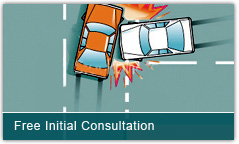Accident Reconstruction
Forensic Dynamics is a full service accident reconstruction firm that has reconstructed a wide variety of accidents over its 30 years in the industry.
Whether it's a MVA collision, heavy vehicle roll-over, recreational boating incident or a pedestrian involvement, to name but a few, the principals of investigation and reconstruction remain fundamental.
Typically, we provide technical scientific answers to the following common issues:
![]() What was the speed of the vehicle(s) involved?
What was the speed of the vehicle(s) involved?
![]() Where did impact occur, and at what angles?
Where did impact occur, and at what angles?
![]() What were the weather conditions, human factors or roadway design issues, and what role, if any, did they play in the accident?
What were the weather conditions, human factors or roadway design issues, and what role, if any, did they play in the accident?
![]() What was the visibility and the potential for avoidance of one or more of the parties?
What was the visibility and the potential for avoidance of one or more of the parties?
![]() Are the injuries claimed consistent with the magnitude of the impact and the occupant dynamics?
Are the injuries claimed consistent with the magnitude of the impact and the occupant dynamics?
![]() Who was the driver of the vehicle, and were the occupants wearing their seatbelts?
Who was the driver of the vehicle, and were the occupants wearing their seatbelts?
To view information specific to a certain type of accident, please select a category from the menu box on the left. To read more about our reconstruction services in general, please continue below.
Tools and Investigation
Our engineers have numerous tools available to them to analyze the case and provide answers to the pertinent questions.
The Evidence
The Tools
The Presentation
The Evidence:
When relevant, we attend the incident site to obtain precise measurements and survey the location first hand. We are able to conduct visibility studies, re-create the conditions of the accident, observe any roadway evidence left, such as skid marks or scuff marks, and address any potential roadway design issues.
We conduct vehicle inspections whenever possible in order to collect the most accurate evidence of vehicle damage, evidence of contact, mechanical condition, and visibility of a specific driver based on their height/weight and seat position, to name but a few common areas of focus.
In certain cases, crucial parts of the vehicle (such as tires, light bulbs or seatbelts, for example), can be inspected in detail to provide an in-depth analysis indicating mechanical failure or usage at the time of the incident.
We review witness statements and depositions as a secondary source to supplement our investigations and empirical evidence, and re-create the most reasonable and accurate scenario of what took place.
The Tools:
Our engineers combine the fundamentals of science with state of the art hardware and software to provide the most accurate analysis possible. We start by creating a scaled diagram of the incident site and mapping the vehicle crush profiles of exact damage sustained. From there, we are able to determine the forces required to produce such damage and create an intervaled time-distance analysis of vehicle positions approaching the point of impact, as well as simulations of the vehicle dynamics at the point of impact following through to the point of rest. ALL of our analysis is based on exact scientific formulas, specific detailed measurements and intimate knowledge of the variable conditions present.
We have advanced training and employ high-tech programs such as PCCrash, Photomodeler, AutoCAD, WinCrash, EdCrash, Crash Data Retrieval System for black box downloads, and various animation software.
The Presentation:
Our focus is on providing detailed and on-point analysis and conclusions in terms that everyone can understand. The key is to communicate often very complex and complicated scientific concepts in a way that is easily understood by our clients and the courts.
Depending on the needs of a client, we will present our findings in either verbal report form directly to our client, or in a formal written report, signed and dated by a senior professional engineer.
Where helpful, we will provide technical animations to re-create an accident in real-time to better illustrate key issues such as timing and potential for avoidance, visibility or sequence of events, for example.





